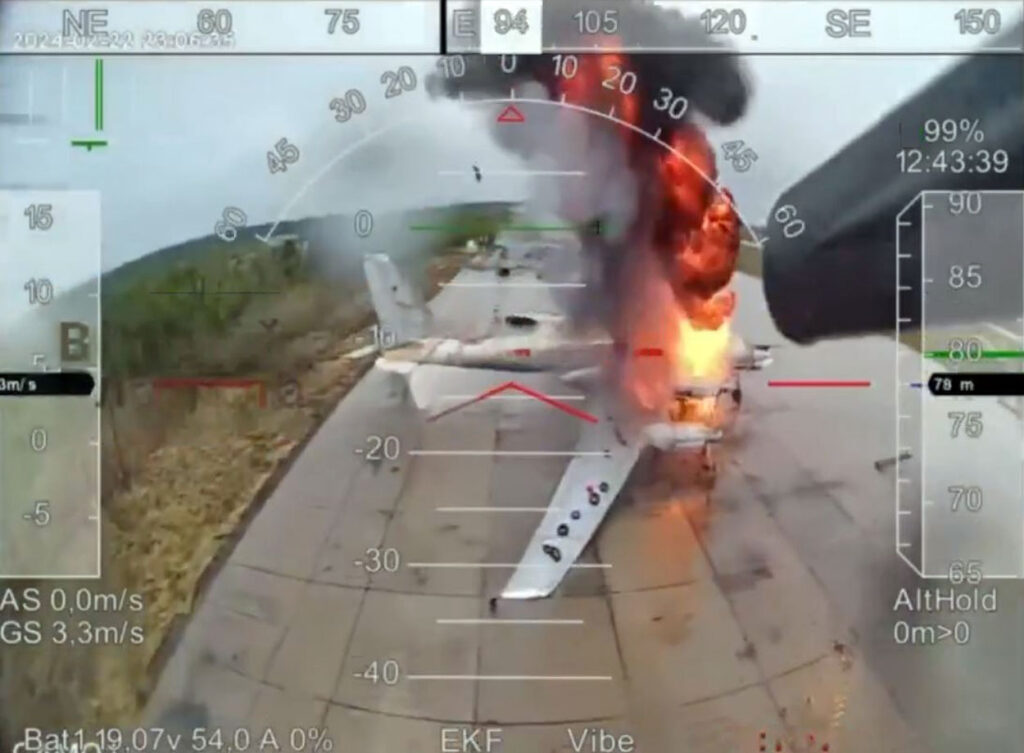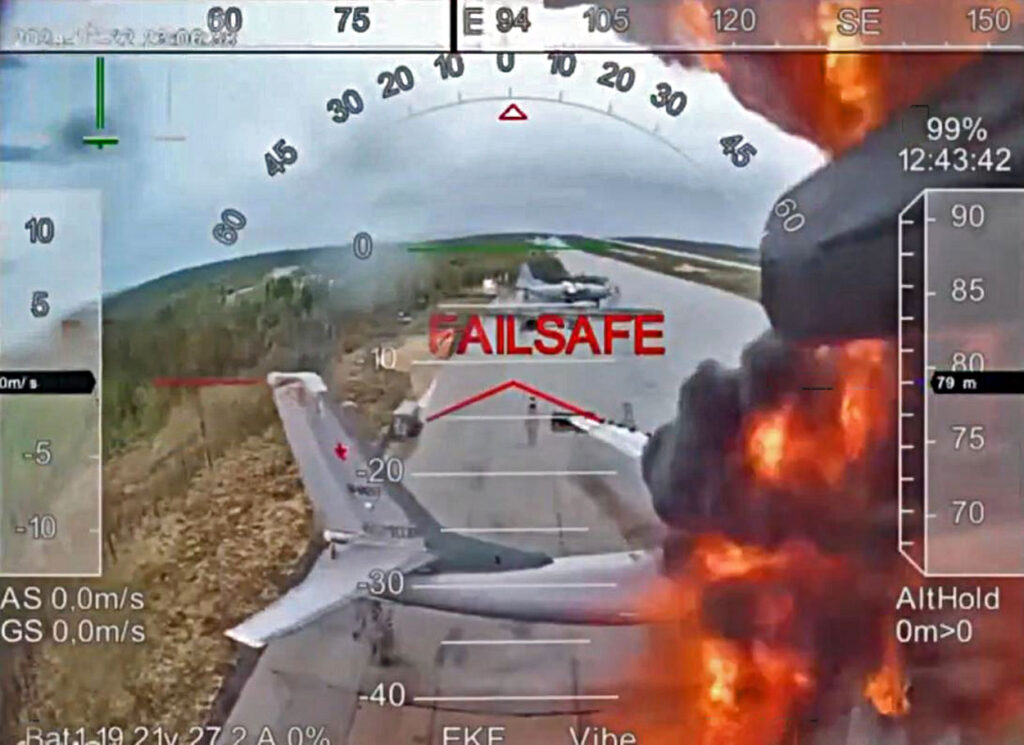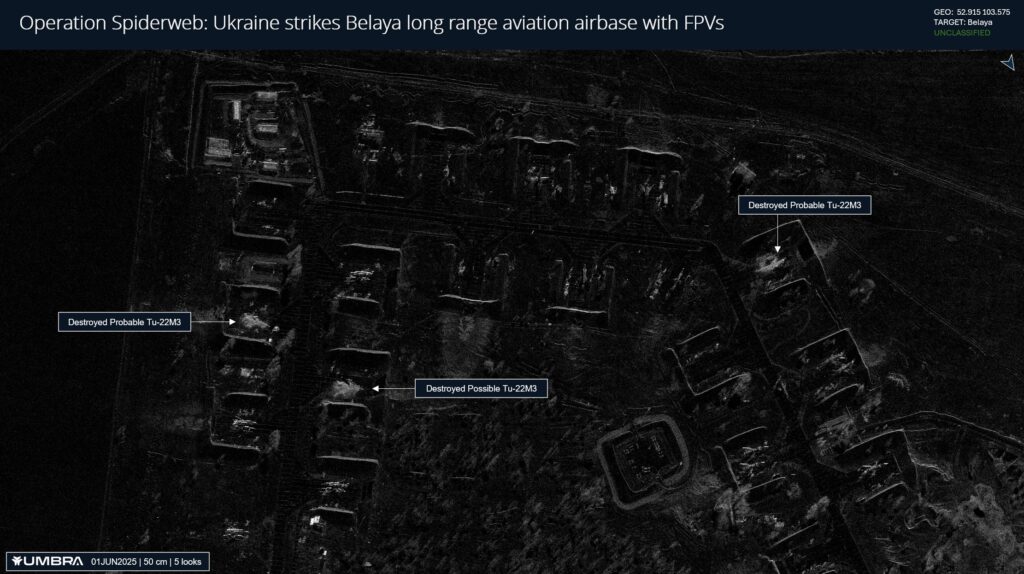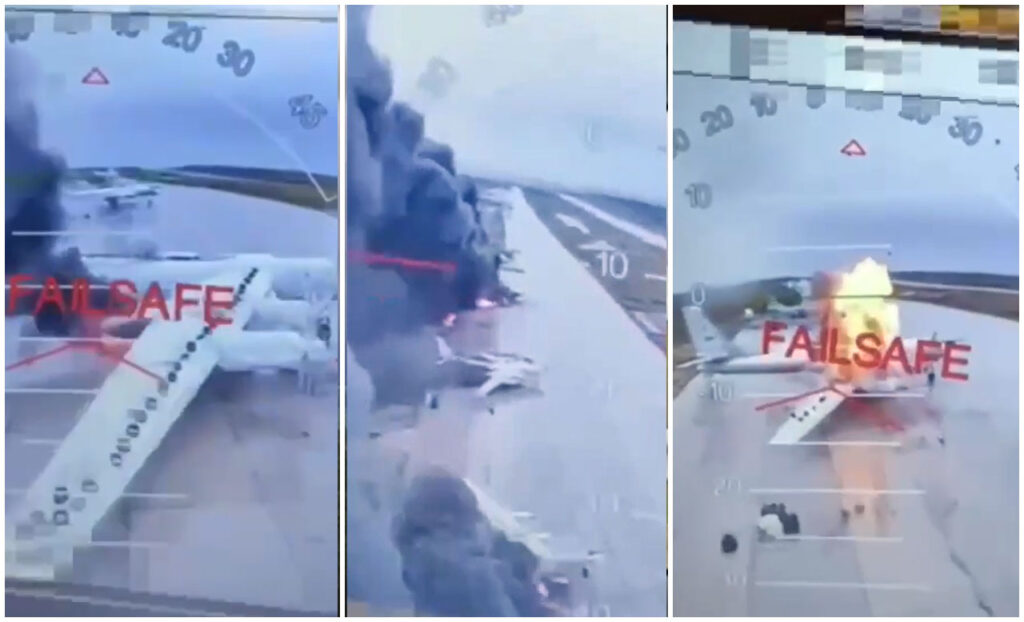Frontline report: Ukrainian Spiderweb operation triggers mass paranoia as Russia hunts threats in every truck

Today, there is important news from the Russian Federation.
Here, Ukraine exploited the chaos after its devastating Operation Spiderweb and targeted more Russian airfields with long-range drones, while the Russians were too busy to check every truck on their road network because of the paranoia that more Ukrainian drones may pop out at any moment.
As details continue to surface, it is clear that Ukraine executed Operation Spiderweb in spectacular fashion, destroying a third of Russia’s strategic bomber fleet in a single coordinated drone strike on multiple airbases deep inside enemy territory. Satellite imagery continues to surface, raising the number of confirmed losses and solidifying the operation as an unparalleled success in modern military history, with some analysts drawing comparison to how nuclear bombs changed the way wars can play out.

But despite this tremendous success, Ukrainian forces were far from finished. Capitalizing swiftly on the chaos and panic gripping the Russian defense systems, Ukraine quickly unleashed further drone assaults on key Russian airfields.
Notably, overnight drone strikes targeted military airbases in Borisoglebsk and Tikhoretsk. In Tikhoretsk, newly constructed hangars were set ablaze, suggesting damage or destruction of aircraft concealed inside. Meanwhile, the Borisoglebsk airbase experienced a particularly heavy drone barrage, leading to confirmed fatalities among Russian Air Force personnel.
Though Russian officials hastily assured the public that no aircraft were harmed in the attack, the human casualties represent severe losses, as training pilots and air force personnel, particularly instructors, takes years and substantial resources, deepening Russia’s military setbacks.

The aftermath of Operation Spiderweb extended well beyond physical destruction, dramatically impacting Russian domestic logistics and economy due to unprecedented paranoia about possible further truck-based drone attacks. Russian authorities, gripped by panic and desperate to prevent further humiliating strikes, now view nearly every truck as a potential threat. Across Russia, widespread checkpoints and roadblocks have been hastily established, resulting in kilometers-long traffic jams of trucks awaiting rigorous inspections.

Videos circulating online illustrate hundreds of immobilized trucks, indicating that Russia’s extensive and crucial domestic road transport network is grinding to a halt. While the economic repercussions are difficult to predict precisely, the sheer scale of Russia and its heavy reliance on road transport suggests a prolonged paralysis that will almost certainly disrupt critical supply chains, harming economic productivity for weeks to come. This will also lead to delays in military logistics, which will hurt Russia’s summer offensive in Ukraine.
Amid this growing logistical chaos, Russia’s internal response has devolved into a frenzied search for scapegoats. Prominent Russian media figures and military analysts were humiliated by the effectiveness of the Ukrainian operation. Additionally, the blame and anger fell on the role ordinary citizens and conscripts played in documenting and circulating results and evidence of the attacks online by posting footage of the strikes. These videos not only boosted Ukrainian morale but also provided vital intelligence, allowing Ukraine to assess the precision and success of their strikes and to plan even more devastating future operations.

This frenzied climate has triggered widespread arrests, as Russian security services desperately detain anyone remotely connected to the strikes. Notably, a couple accused of housing one of the warehouses used to stage the drone attacks has already been arrested. Another individual, a truck driver involved in transporting a Ukrainian drone container, claimed ignorance, asserting he was simply instructed to meet someone at a location.
Panic and hysteria during the operation spiraled so much out of control that another truck driver was brutally killed by an angry mob, highlighting the volatile and dangerous situation rapidly unfolding within Russian society with each Ukrainian success.
Overall, though Operation Spiderweb formally concluded, it continues to profoundly destabilize Russia, creating further tactical and strategic opportunities for Ukraine. The initial operation ignited panic across Russia, which Ukrainian forces promptly exploited through timely follow-up drone strikes, delivering additional damage to Russian airfields.
Meanwhile, Russia remains preoccupied, hunting feverishly for additional hidden threats in trucks spread across its vast territory. With Russian society descending into paranoia and uncertainty, it remains unclear when and where Ukraine’s next surprise attack will occur, ensuring that Russia’s strategic leadership remains in confusion and dread.
In our regular frontline report, we pair up with the military blogger Reporting from Ukraine to keep you informed about what is happening on the battlefield in the Russo-Ukrainian war.












